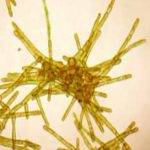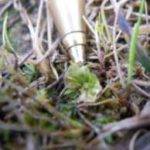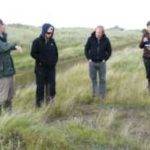Project Background
Ireland has one of the richest bryofloras in Europe, with over 50% of the European bryophyte flora represented in Ireland, which comprises of 227 liverworts, 3 hornworts and 454 moss species. Some species occur in very specific habitats such as dune slacks, machair, fens and old metal rich mine sites. These habitats are under threat from land use change and other human activities and there is an increasing need to intervene to conserve and manage both the species and these habitats into the future if we are to conserve some of our more threatened bryophyte species.
- Bryum uliginosum spores
- Petalophyllum ralfsii
- Dune slack at Bull Island
Project Aims
- Set up suitable permanent monitoring for selected bryophyte populations in Ireland to ensure that both the habitat and environment in the remaining Irish sites is recorded and to maintain there suitability into the future for the continued existence of dune slack, machair, fen and metal rich grassland species Ireland.
- To investigate the developmental stages of some of the more elusive species and to determine reasons for there continued existence in small or single populations. Germination trials and experiments will be carried out at Kinsealy research station in conjunction with Dr. Gerry Douglas.
- To make a full genetic appraisal of the Irish population of Petalophyllum ralfsii, Bryum uliginosum, Paludella squarrosa, Leiocolea rutheana var. rutheana, Catascopium nigritum, Ditrichum cornubicum.
Project Partners
National Parks and Wildlife Service (Funding body), Botany Department, Trinity College Dublin (Dr. Daniel Kelly, Supervisor), Teagasc Kinsealy Research Station (Dr. Gerry Douglas), Dr. David Holyoak (Consultant) & Mr. Donal Synnott (Consultant).



